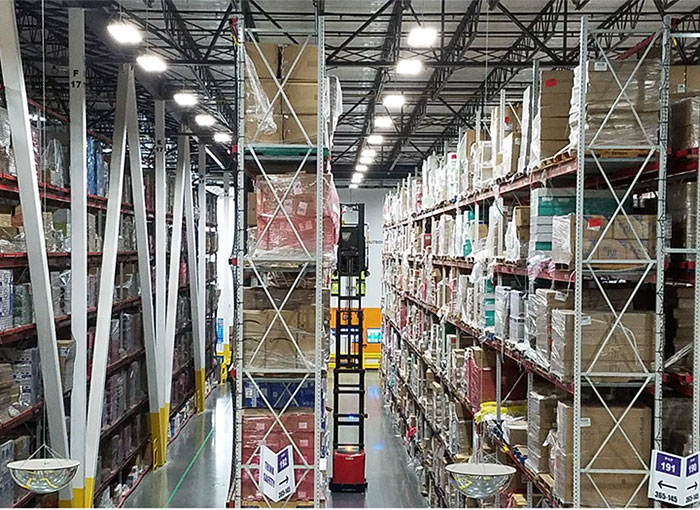CSA Exclusive: Amazon’s Boston-area fulfillment center (BY DAN BERTHIAUME, sourced from Chain Store Age)

Amazon’s sortable fulfillment center in Fall River, Mass., is a mixture of immense size, advanced technology and smart people.
Earlier this week, I had the opportunity to take a guided tour of the Amazon BOS7 fulfillment center – the abbreviation is for Boston, the nearest city with a major airport. As a “non-sortable” fulfillment center, the facility ships and receives items 18 inches and larger.
A lot of Amazon’s success originates behind the scenes. Here are three of the most striking impressions I was left with from my tour.
Size matters
It’s big. Very big. This is the inescapable first thought of a visitor entering the facility, which consists of a massive two-floor building which is a half-mile long, covering more than 1.4 million sq. ft. of space. More than 23 football fields could fit within the confines of the sprawling first floor alone, and 40 football fields could fit inside the entire complex.
The center, which opened in fall 2016, ships hundreds of thousands of products a week, primarily serving the New England states of Massachusetts, Maine, New Hampshire, and Rhode Island. The fact that just four small states (Maine is large geographically but only has 1.3 million residents) require a facility of this size to fulfill some of their orders is a testament to how popular Amazon has become. But it’s not just the size of the fulfillment center that helps support Amazon’s vast operation.
Technology matters
While this facility is not one of Amazon’s robotic fulfillment centers, it still features no shortage of high-technology equipment. Stowers, pickers, and packers all use handheld mobile scanners to receive directions on how to handle products.
Technology also helps protect customer privacy. Employees on the floor have no access to customer data. Once an item is packed for shipment, the packer places an automatically generated barcode label on it and sends it down an automated conveyor belt to the “slam machine.”
This machine reads the barcode data and sends it to Seattle headquarters, where the data is instantly decoded and sent back with customer shipping information that is printed on an automatically affixed shipping label. Only the employees loading the delivery trucks can see where any item is going, as it is loaded.
People matter
Human employees are not an afterthought at Amazon’s fulfillment centers. Products are stored for picking in bins randomly, based on where space is available. This avoids the need for employees to constantly travel back and forth to assigned aisles. Instead, they are directed to the nearest aisle by handheld device, saving significant picking time.
Amazon also follows “Kaizen,” the traditional Japanese method of continuous self-learning, to pilot and implement ideas from employees. For example, a suggestion from a picker resulted in Amazon storing oddly shaped items that don’t fit in bins, like fishing rods, in cardboard cylinders. Kaizen also produced the process of holding the opening of a cylinder with one hand when placing an item inside, to avoid placing products in the wrong cylinder.
recommend